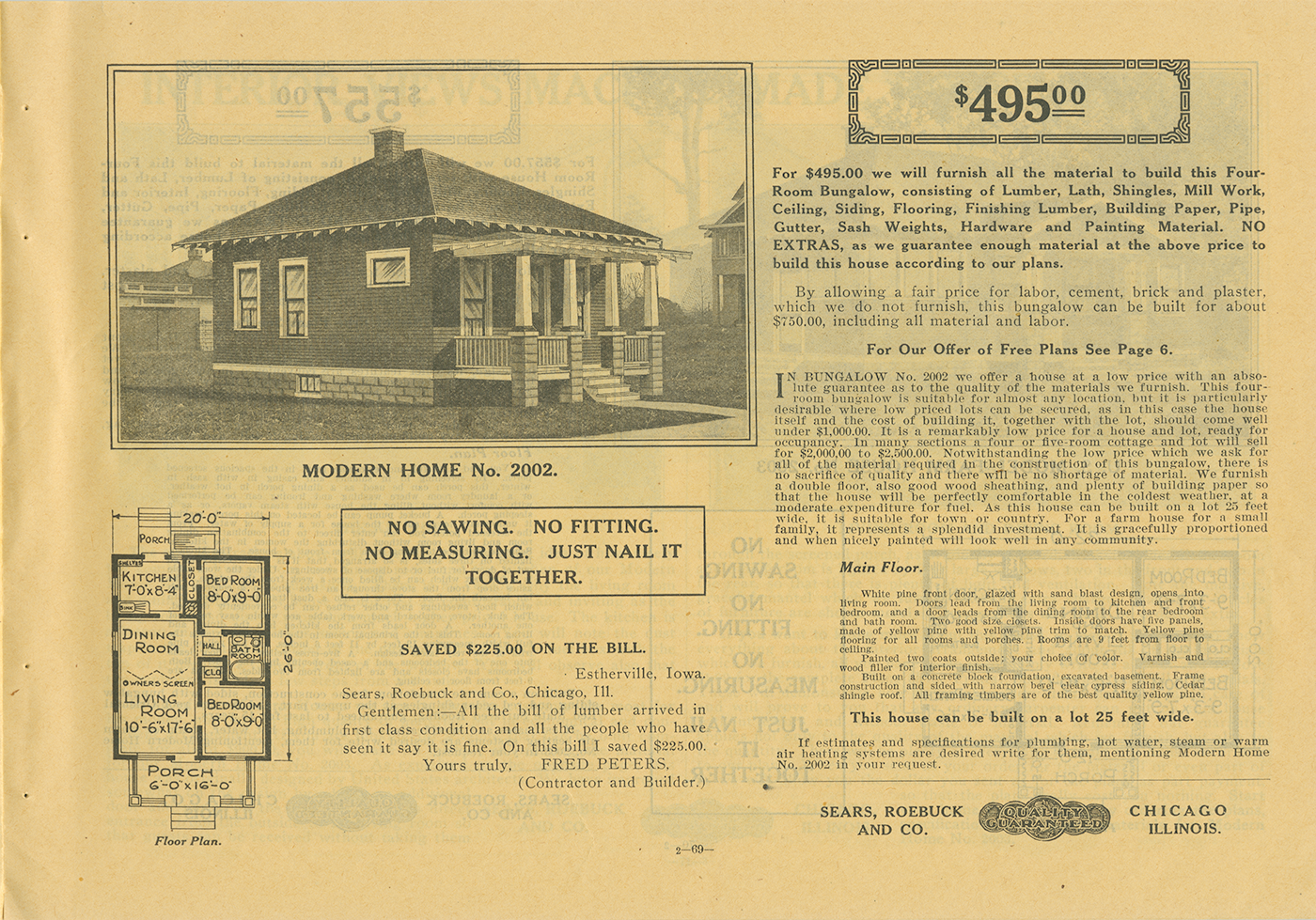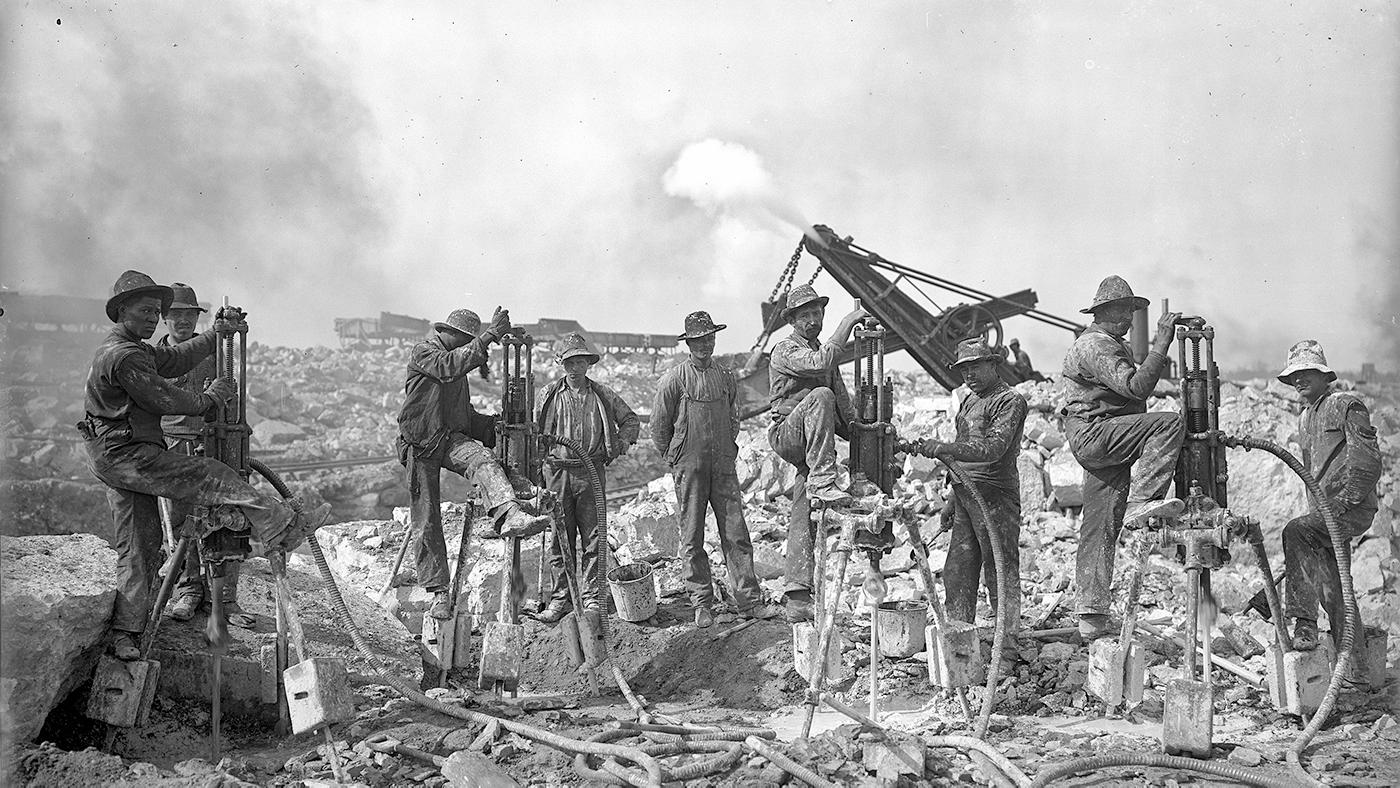The Ultimate DIY: A Century Ago, You Could Buy Everything You Needed to Build an Entire Home from a Sears Catalog
Meredith Francis
November 15, 2023

Chicago Stories: The Rise and Fall of the Mail Order Giants premieres on Friday, November 10 at 8:00 pm on WTTW and will be available to stream on the PBS app and at wttw.com/chicagostories.
One page in a 1912 edition of a Sears, Roebuck and Co. catalog reads, “No sawing. No fitting. No measuring. Just nail it together.” You might see a similar tagline on, let’s say, a cabinet ordered from an online furniture retailer, or a couch shipped in parts that you inevitably get frustrated building. But that Sears catalog page was for an entire house – a quaint, two-bedroom bungalow, in fact.
In the late 19th and early 20th centuries, companies like Sears and Montgomery Ward were the Amazon of their time. By the 1900s, consumers could purchase everything from farming equipment and furniture to the latest fashions and “Dr. Worden’s Female Pills for Weak Women” – seriously – through their mail order catalogs.
Between 1908 and 1942, Sears even sold home-building kits in its catalogs. (Montgomery Ward had ready-to-build house kits, too.) Customers would select a particular “Modern Home” design from the catalog, and Sears would ship all of the materials, which had already been measured and cut, via railroad to the customer. The kit came with the lumber, plumbing, heating, and any other conceivable material necessary to turn it into a home. The customers could then either build the homes themselves or with the professional help of a contractor.
Lara Solonickne is the blogger behind the website Sears Homes of Chicagoland. She discovered the story behind Sears Modern Homes after helping her daughter, who was in third grade at the time, find a topic for the Chicago Metro History Fair. Solonickne became just as interested and created a website that identifies and documents Sears homes in the Chicago area. She said that, although Sears no longer has sales records for the homes, other company memos, building permits, and mortgage records have revealed an estimated 65,000 to 70,000 of these homes can still be found across the country. According to Solonickne’s site, there were upwards of 370 different designs in a variety of sizes.
“Sears sold a wide range of houses. Some were very modest and simple, and some were much more elaborate and fancy,” Solonickne said. “Because Sears sold to all of America, they sold to you no matter where you fell on the economic spectrum. The homes business was very similar. They had something for everyone.”
Many Sears Modern Homes can still be found in Illinois as well as New York, Ohio, and Pennsylvania, according to Solonickne’s website. The Chicago suburbs of Elgin, Downers Grove, and Aurora each have a large concentration. One design, a small bungalow called the Sears Crescent, was “wildly popular.”
“It was a one-story bungalow with a very elaborate front porch. It had pillars and a very grand entrance for a moderate-sized house. It was very popular at the time, and they are very popular today. They sell very quickly [on the real estate market].”
Solonickne said that, in many cases, the homes remain in good shape.
“What I understand is when you have a building inspector come through your Sears house, they're always very, very impressed with the lumber quality. Everything really was the top [quality] that you could get at the time,” Solonickne said. “In terms of the construction, people often have questions like, ‘Well, they were built by the owner. How do we know they're not falling apart or that they were put together wrong?’ First of all, some of these have been around for over 100 years. Secondly, people were building these for their own families. I think if you're going to be a perfectionist about something, it's going to be your family's house.”
Sears stopped selling home kits in the early 1940s, after the Great Depression slowed sales and World War II shifted resources to wartime building projects. But in their heyday, Sears Modern Homes provided access to relatively affordable housing. That two bedroom bungalow kit in the 1912 Sears catalog was advertised for $495, or about $15,500 in today’s currency. Not bad, considering the median home price in the United States today is over $400,000. (In Illinois, it’s about $272,000, according to Forbes).
“Sears had an enormous contribution to the American landscape in a lot of ways, but particularly as it pertains to housing,” Solonickne said. “The Sears kit houses were an innovative response to the customers and their needs. Their customers were striving for the middle class oftentimes, and they want to become homeowners. So it's really a story of the American dream.”








